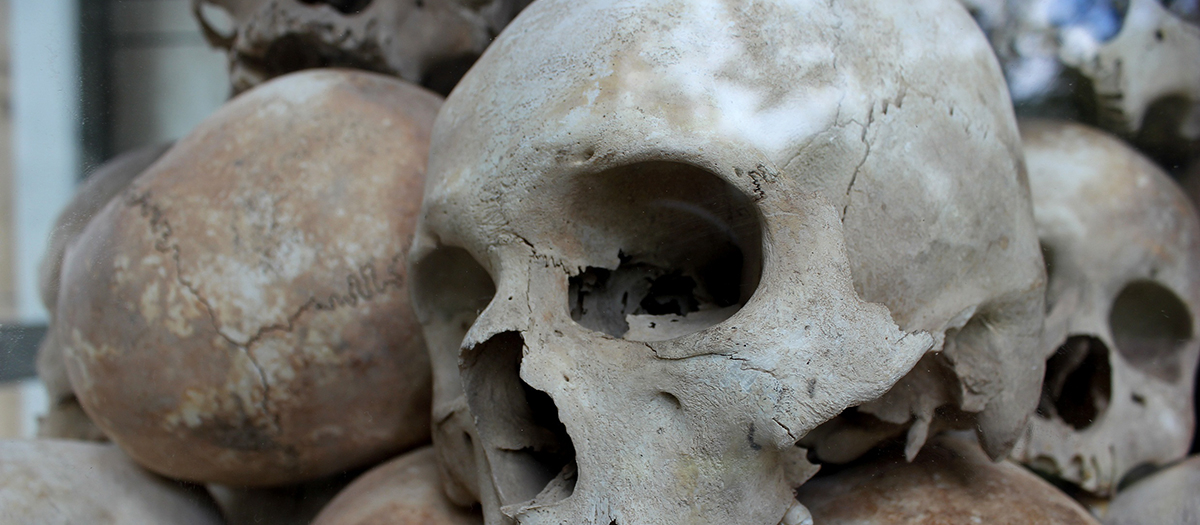In the 18th century, Viennese physician Franz-Joseph Gall claimed that personality and intelligence were determined by the shape of the brain, which in turn was reflected by the shape of the skull. Examining the hills and valleys of the cranium supposedly gave clues about character traits and intellectual function. Murderers, for example, featured a particular type of skull protrusion, which differed from the bumps on the head in the intellectually gifted. These ideas gave birth to the practice of “phrenology,” which revolved around having one’s head examined to reveal character traits and intellectual potential.
Couples flocked to phrenology parlours to seek advice about compatibility, and employers had prospective employees’ skulls analyzed for suitability for specific tasks. Phrenologists claimed to be able to detect traits of “affection, self-esteem, firmness, conscientiousness, approbativeness, cautiousness, secretiveness, destructiveness, acquisitiveness, amativeness, veneration, benevolence, spirituality, ideality, causality, constructiveness and individuality.
Phrenology was even embraced by the likes of Thomas Edison and Sir Arthur Conan Doyle, who endowed both Sherlock Holmes and his nemesis Professor Moriarty with high foreheads, which according to the tenets of phrenology, connoted intelligence. Conan Doyle himself did not have a high forehead, which perhaps explains why he believed in the existence of fairies and in talking to the dead. Or perhaps not.
Manual examination of the skull was not sophisticated enough for American Henry Lavery, who in 1905 invented the “psychograph,” a contraption that was worn like a helmet. It had hundreds of moving parts and measured the topology of the skull at 32 different points and gave readings ranging from “deficient,” to the grammatically curious “very superior.” Department stores and theatre lobbies featured the psychograph, and people happily went home with readouts like: "you do not make enough effort towards expressing consideration of others.” the notion that bumps on the skull could reveal character traits. .
The phrenologists only diagnosed, they offered no treatment. Enter the “craniosacral therapists.” This rather unusual regimen can be traced back to Dr. William Sutherland, an American osteopath who introduced the practice in the first half of the twentieth century. Osteopaths believe that physical manipulation of the skeleton can alleviate many health problems. But Dr. Sutherland added a further twist. He contended that manipulating the bones of the skull was the key to curing illness. Why? Because such manipulation would affect the functioning of the cerebrospinal fluid, the fluid that surrounds the brain and the spinal cord. Sutherland noted that this fluid pulsed rhythmically and somehow concluded that changes in its natural rhythm caused disease. These irregular pulsations he believed could be corrected by gently manipulating the bones of the skull in order to alleviate restrictions on the flow of the cerebrospinal fluid.
Sutherland was promptly labelled a heretic and a quack by other physicians but received strong support from many patients who claimed that a variety of health problems resolved with craniosacral therapy. And what does modern medicine say about this? Pretty well that it's all bunk. The bones of the skull are not amenable to manipulation as Sutherland and his later followers claim. They actually fuse during infancy. While it is true that the cerebrospinal fluid does pulse, this is actually related to blood flow, not to any mysterious force. Indeed, the whole idea of a craniosacral rhythm cannot be scientifically supported.
When different practitioners are asked to measure this supposed rhythm by placing their fingers on a patient's head, they come up with vastly different craniosacral rates. This isn't surprising, since they are trying to measure something that doesn’t exist. Then in response to their measurements, they apply specific manipulations to the skull and claim to be able to help chronic back pain, autism, asthma, learning difficulties, fibromyalgia and a host of other conditions. Practitioners also claim that their skull manipulations are preventative and can bolster resistance to disease. They report that patients who have regular craniosacral adjustments feel more energetic and happier. A strong proponent of this therapy was Floridian osteopath, Dr. John Upledger, founder of the “Upledger Institute.” When his skull manipulation didn’t work, he had other approaches. An overly anxious patient may be diagnosed with having excess energy and could expect his toe to be grounded with a copper wire to a drainpipe in order to let the excess energy flow out. In one case a lady was tethered with a 30-foot copper wire so she could still whirl around the house as her energy was drained away. What can we say? She should have her head examined.







